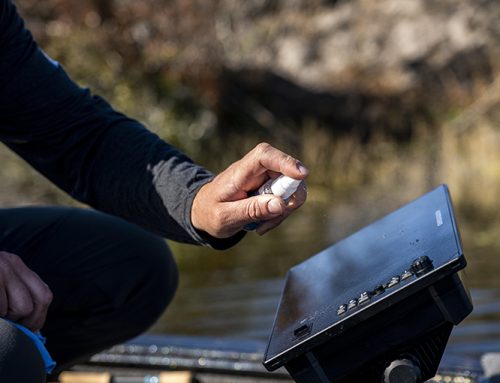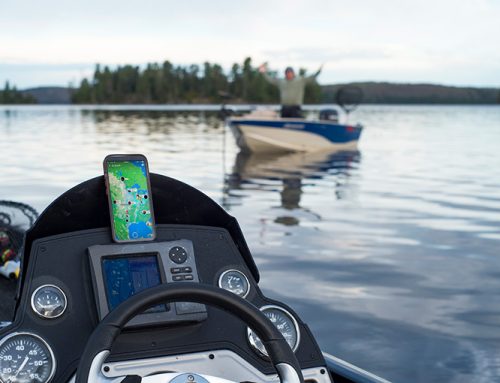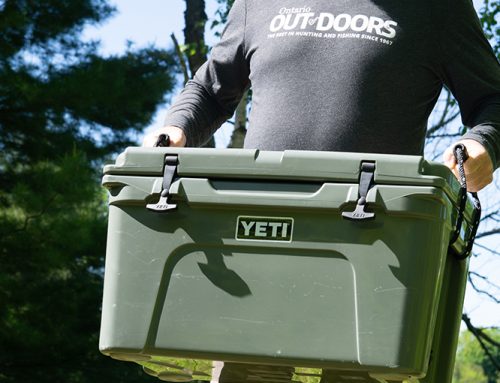 There was a time when baits, often labelled “banana lures,” were on the cutting edge of angling.
There was a time when baits, often labelled “banana lures,” were on the cutting edge of angling.
That time is farther back than I care to admit, but I certainly grew up seeing Flatfish, Kwikfish, and the Canadian Wiggler in just about every tackle box there was. While they were the top sellers, other lesser-known banana lures (at least in my world) included the Lazy Ike and Beno.
They all provided pretty much the same thing: a sexy, slow, wobbling action, especially attractive to walleye, steelhead, and lake trout.
Early history
The origins of two of the banana lures can be traced back to the Dirty ‘30s. The first Flatfish and Lazy Ike lures were hand-carved creations made from wood. At some point after the Second World War, manufacturers began mass-producing these lures on lathes. By the 1960s, there were very few wooden banana baits available, save for some hand-made boutique giants developed for muskie and lake trout.
The vast majority of companies had switched to the more durable and cheaper plastic body, which is still used today.
On the other hand, the Canadian Wiggler has been around for nearly 70 years, and has not gone the plastic body route. In fact, it has retained its distinctive, hollow brass body that makes it virtually indestructible. The Canadian Wiggler can also be cast significantly farther than any of its plastic or wooden counterparts.
Seductive for walleye
My earliest clear memory of using a banana bait was as a budding, twenty-something outdoor writer looking for new angles on walleye fishing. A friend of mine had worked in a tackle store in Thunder Bay owned by a fellow named Lorne Allard.
Mr. Allard was something of an Obi-Wan Kenobi of fishing around the city in the 1970s and 1980s, and helped to popularize a lot of things in the Lakehead, including steelhead fishing. Yet the trick my friend picked up from Allard was trolling for walleye with a slightly modified Flatfish.
The modification was simple, but made perfect sense. You replaced the single or gang treble from the bottom of the Flatfish with a small monofilament trailer leader and single hook. Onto this hook you threaded half a dew worm. The rig was then slowly trolled or drifted over rock piles and reefs.
We were going low tech back then, so no fish finder or anything but “feel” to tell us how deep we were.
During a trip to a lodge on Lac des Mille Lacs in the mid-1980s, my friend and I gave Allard’s banana-bait rig the field test. We picked our way down into Boot Bay, an especially bouldery section of Lac, and chose a good-looking area. We were going low tech back then, so no fish finder or anything but “feel” to tell us how deep we were.
I remember we rigged up our customized flatfish, threaded on the half crawler, and added a couple of split shot for weight. We used the wind to push our boat along and let out line until we could feel the occasional tap of bottom.
The side-to-side action of the lure made the rod tips vibrate slightly, and we watched them intently as we drifted. At one point, I looked over to see the tip of my friend’s rod bowing ever so slightly and then it went over sharply. Fish! That was the first of several fat walleye we caught with Allard’s banana-bait rig. It worked like a charm.
Go-to for steel
Several years later, I was fishing with longtime friend and ardent steelhead angler, Jon George, on a stream east of Thunder Bay. George is a man of simple tastes, and likes to keep his fishing that way as well.
So when it comes to steelhead, he generally prefers to use a roe bag and float. That’s his go-to presentation. On the rare times that doesn’t work, he has other options. Two, actually. The first is to throw a Mepps spinner. The second — and final — option is to drop back a Flatfish.
They grab it as a reaction, and maybe as a way to protect their turf.
At the time, I’d never seen this done on a north shore stream, and was a tiny bit sceptical that it would actually work. However, when it comes to rainbow trout psychology, I will always defer to George.
The technique he demonstrated was pretty simple. George tied an orange-with-black-stripe Flatfish on his line, added a split shot, and then set up at the top of a deep pool or run. With rod tip pointed out, he allowed the lure to slowly wiggle its way down the current seam, holding it in place occasionally, before dropping a bit more line.
The first time I watched him perform this trick, he nearly had the rod pulled out of his hands by a big, ornery buck. “They grab it as a reaction, and maybe as a way to protect their turf,” he said. “Whatever it is, it works.”
I’ve caught many steelhead with this trick over the years, and found it especially good for big fish.
Other examples
I’ve seen other examples of banana baits as a go-to, including up in the Northwest Territories, where my wife and I trolled the largest Flatfish on Earth and had them crushed by prehistoric-looking lake trout.
However, it seems this particular family of lures has been unjustly relegated to the also-ran category by many anglers. That’s too bad, because the slow, deliberate action that makes them seem so old school, is also one of their greatest strengths. When all the speed trollers and power fisherman have passed by, it’s the banana bait that can often finish the job.
In the long run, the tortoise always beats the hare.
This article originally appeared in the Ontario OUT of DOORS June 2015 edition. To see more stories like this, subscribe to OOD today.






Leave A Comment